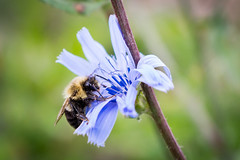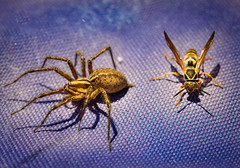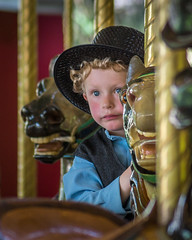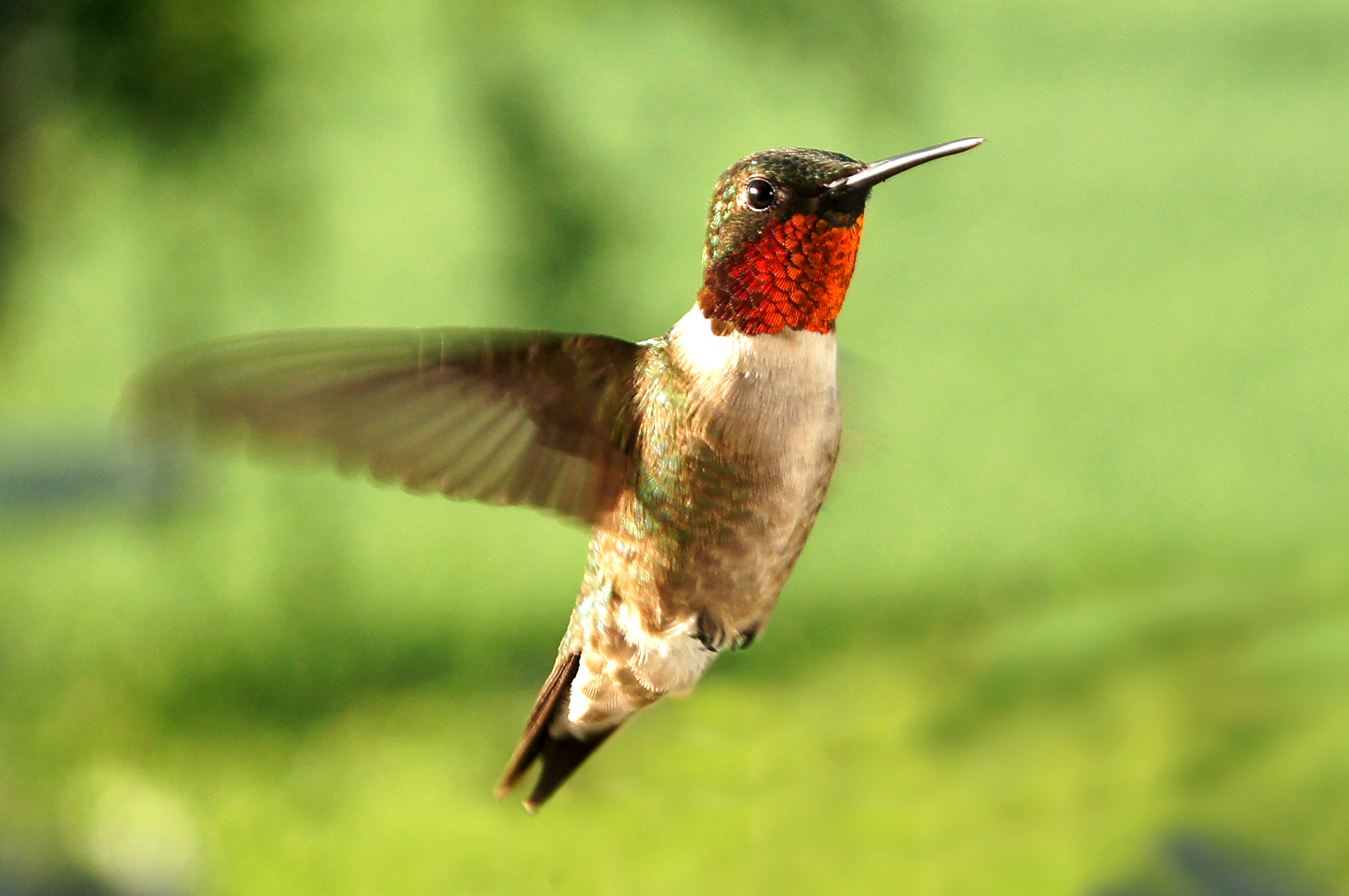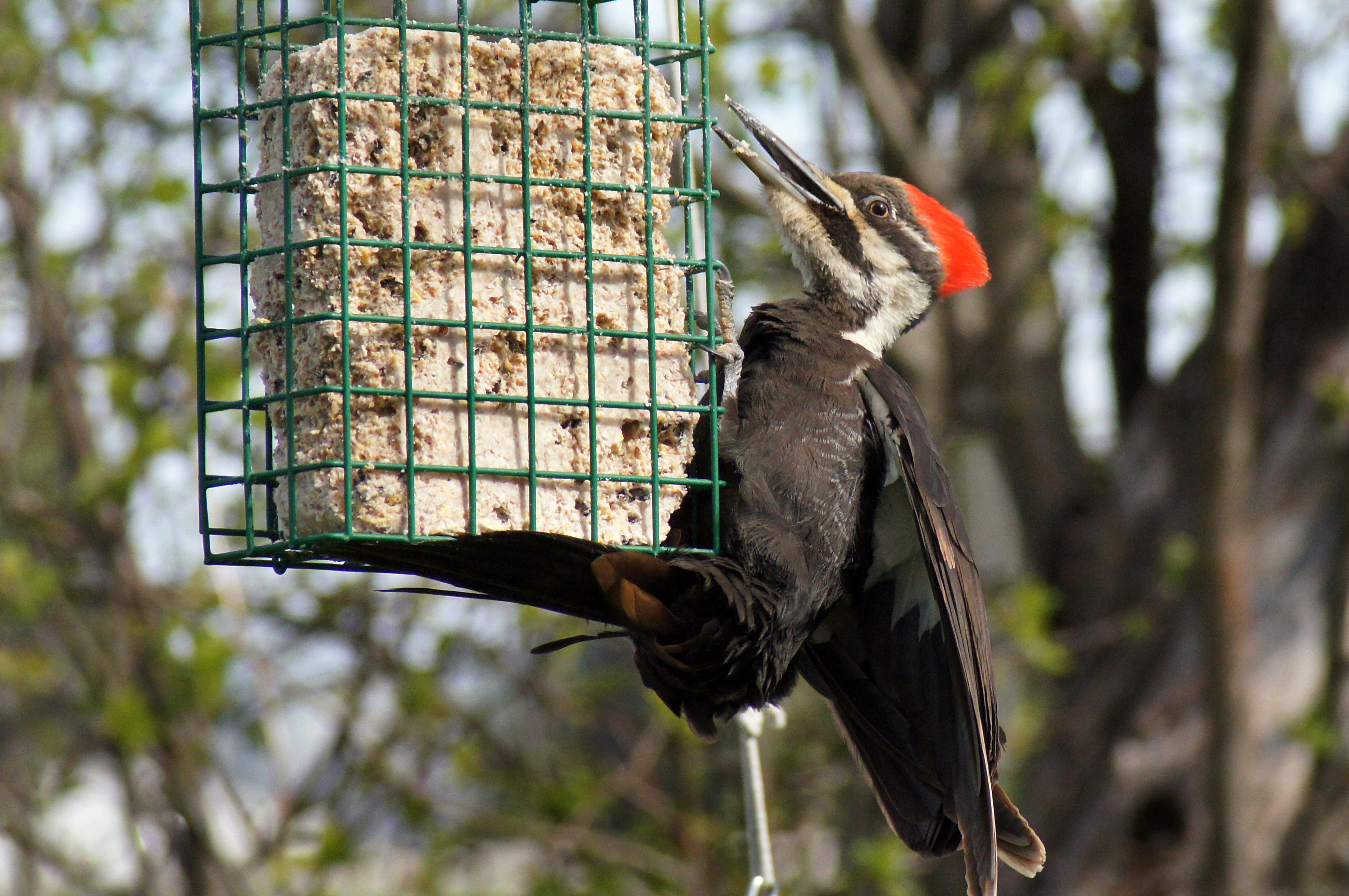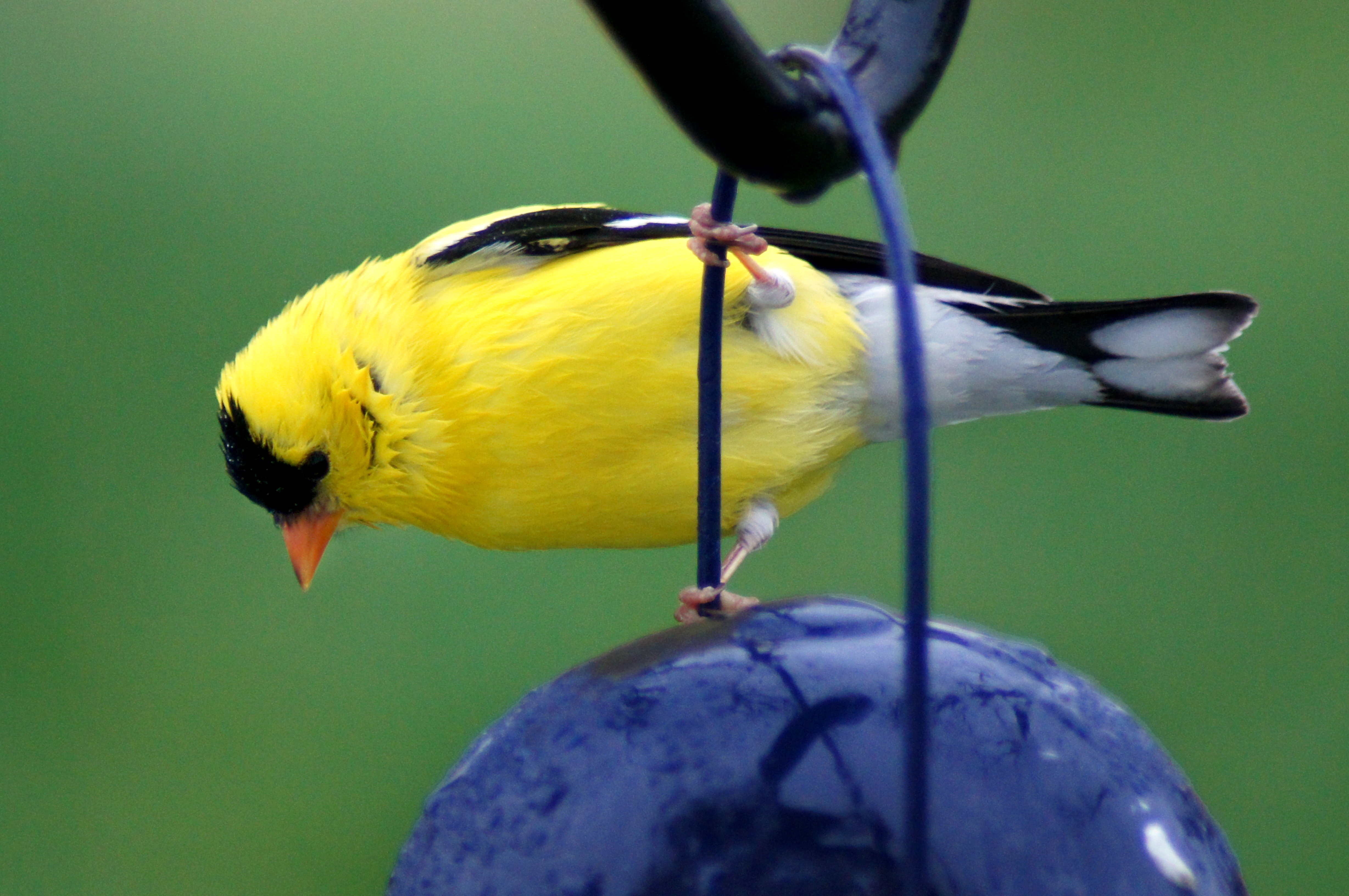Bird
Can’t Hold Her Licker
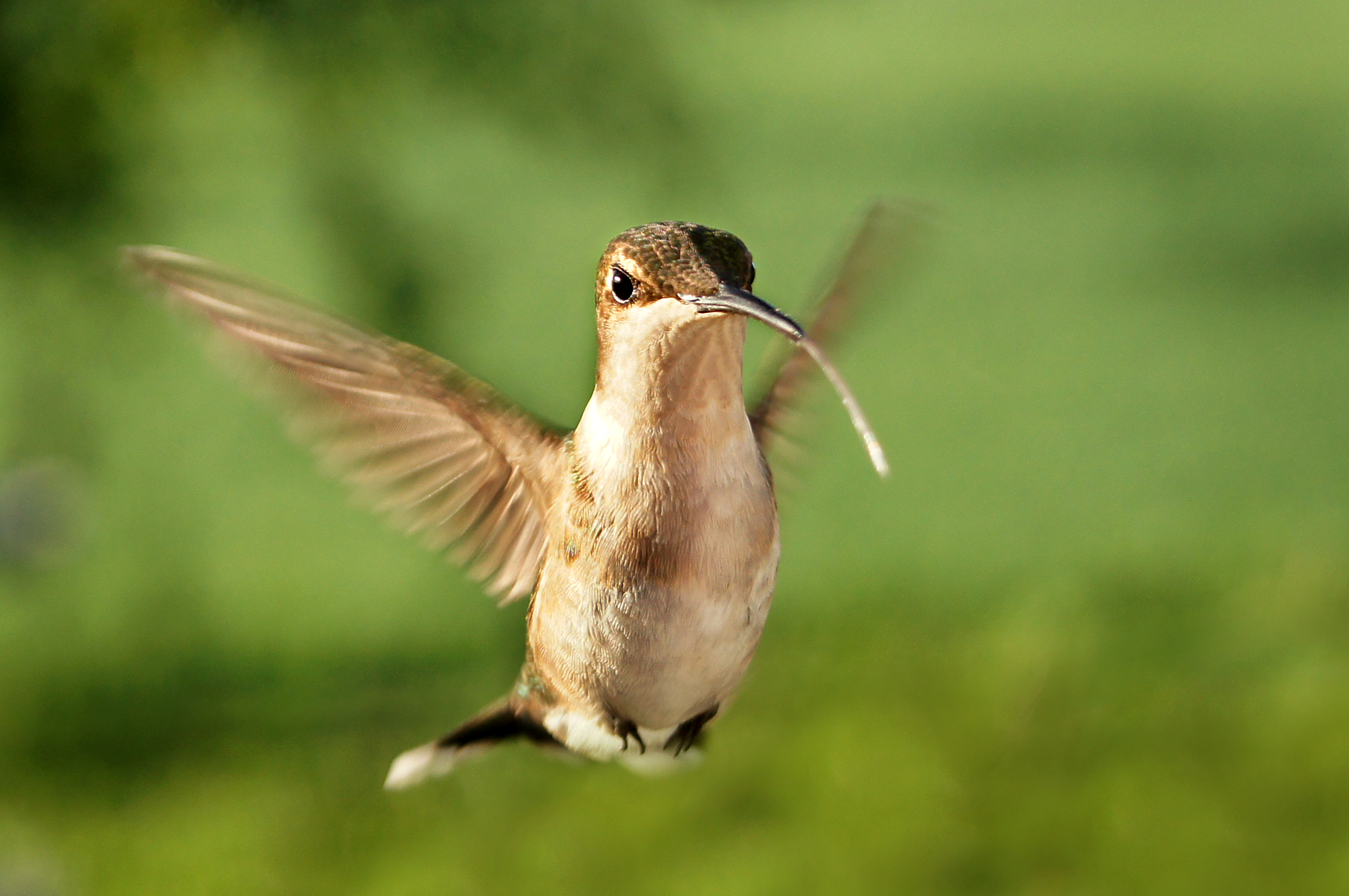
It happened so fast, I didn’t see this at the time I took the photo. This female, ruby-throated hummingbird was sticking her tongue out at me at the precise moment of the shutter snap.
It’s too bad you can’t see it clearly because the tongue was moving so fast and was out of the range of focus.
Here are some fascinating facts about the hummingbird tongue from www.worldofhummingbirds.com …
The tongue on a hummingbird is very long. It is grooved like the shape of a “W”. On the tip of the tongue are brushy hairs that help lap up nectar from a flower. A hummingbird can lap up nectar at a rate of about thirteen (13) licks per second. Hummingbirds have only a few taste buds on the tongue. Hummingbirds can taste just enough to know what is good and what is bad. They can also taste what is too sweet, not sweet enough, or just right.
(To see a larger version of this image, just click on the photo.)
Spider Assassin
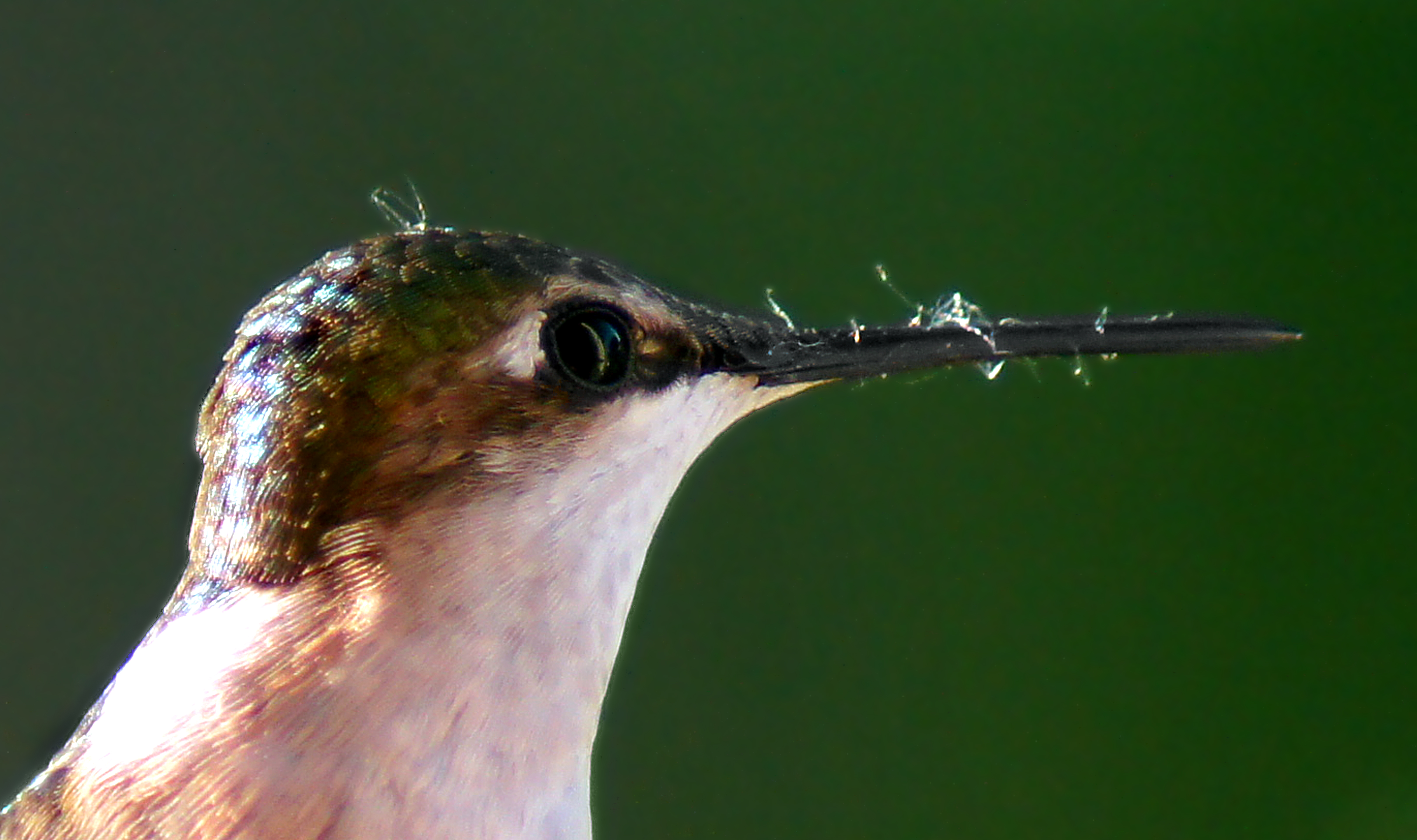
Sure…she looks sweet, petite and innocent, but beneath that tiny hummingbird breast beats the heart of a skilled killer. She is a spider assassin! (By the way, that heart beats at about 250 beats per minute while resting and about 1,260 beats per minute while flying.)
This photo could be used as evidence in an avian court to convict her. You can clearly see strands of spider web stuck to her beak and a bit on her head. As further evidence, take a look at a photo I entitled Delicate Delight; posted a few days earlier. If you look closely at this image of another female hummingbird captured in flight, you will notice little bits of spider web stuck to her beak, too.
Most people mistakenly think that a hummingbird’s diet consists solely of nectar from flowers and feeders that people hang in their garden. Hummingbirds also need protein. They get that protein from a variety of bugs…including spiders.
And here’s another fascinating fact about the world’s tiniest birds – hummingbirds use spider webs to build their nests.
Here are some notes from worldofhummingbirds.com – –
Hummingbirds love to eat small bugs like gnats, aphids, and spiders. The hummingbirds will even eat all of the bugs out of the spider web, eat the spider, and then steal the web to help build a nest.
[To build a nest] She likes to use nice soft material like moss and lichen. She also likes to use cotton fluffs, bits of willows, soft plant pieces, dryer lint, and leaf hairs. She will bring these items back to her nest a little at a time, gluing it all together with spider webs. The spider webs make terrific glue for the nest, allow the nest to stretch and be flexible as the baby hummingbirds grow, and make it easier for the mother hummingbird to repair the nest when kids do what kids do.
If you learned something new and liked the photo, please share this post with a friend and leave a comment. (Thanks!)
(This image has been enlarged a great deal to make it easier to see the spider web. If you’d like to see an even larger version, simply click on the photo.)
Humdinger
hum·ding·er/ˈhəmˈdiNGər / Noun: A remarkable or outstanding person or thing of its kind.
There’s little that compares to the dazzle of a male ruby-throated humming bird when the light hits it just right. If you’re able to watch one while he’s perched, you’ll see flashes of brilliant red with just a slight turn of his head.
Even though the sunlight is coming more from behind this bird, I used a shiny surface to reflect some of that sunlight to the front side, bringing out the colors of his gorget (the neck area).
(Click the image to see a larger version.)
All of the photos I post are available for purchase. If you’d like to buy one, click on the blue “Buy this Online” bar below for a variety of print and frame options or contact me for digital purchase and licensing options.
Bluebird Trio
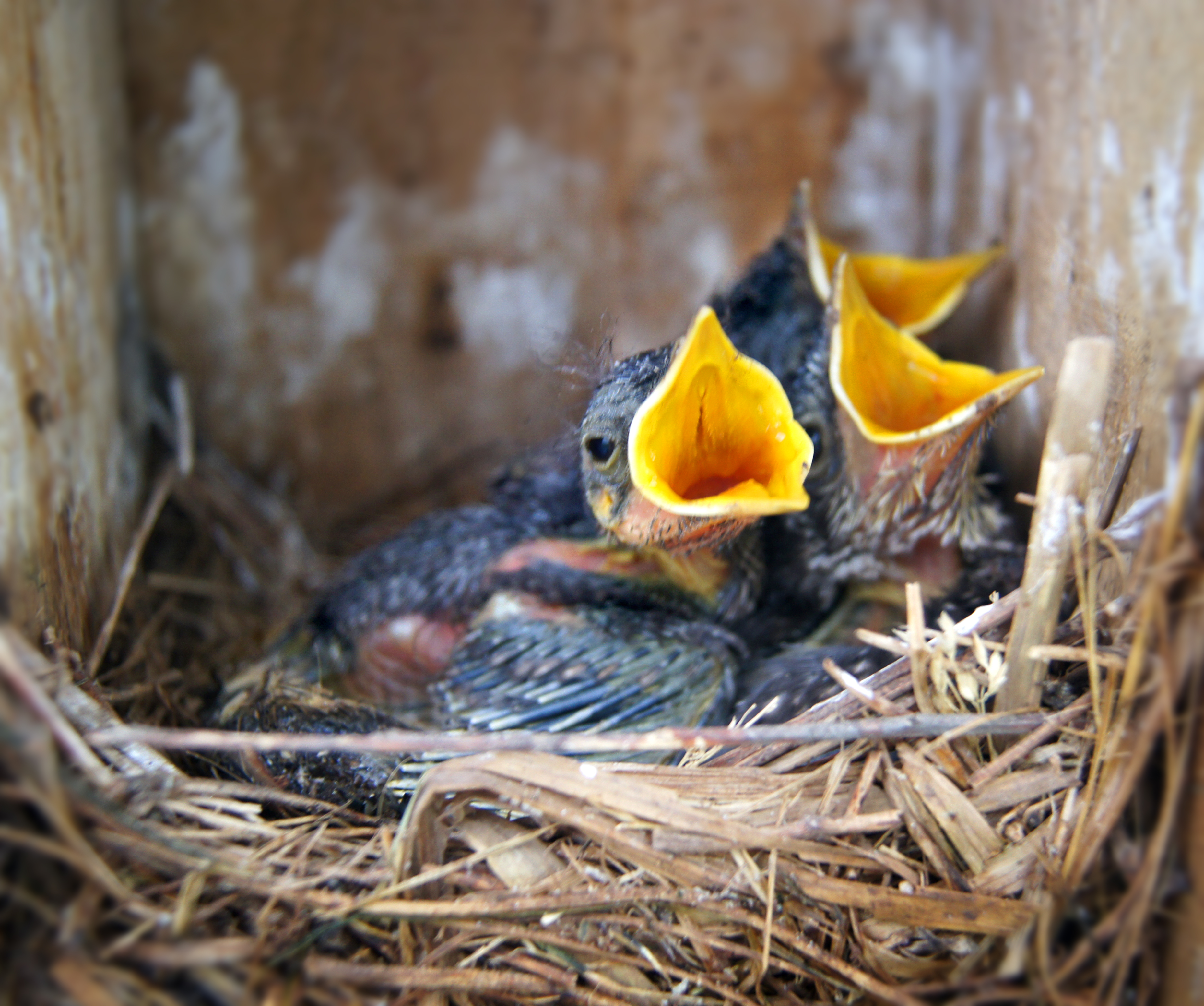
These blue birds look like their belting out a favorite song in three-part harmony. Actually, they are hoping someone will drop a worm or bug in their mouths. The wide open mouths are a response to a soft whistle from me. Even though I don’t sound anything like a blue bird, the whistle is close enough to make them think lunch is being served.
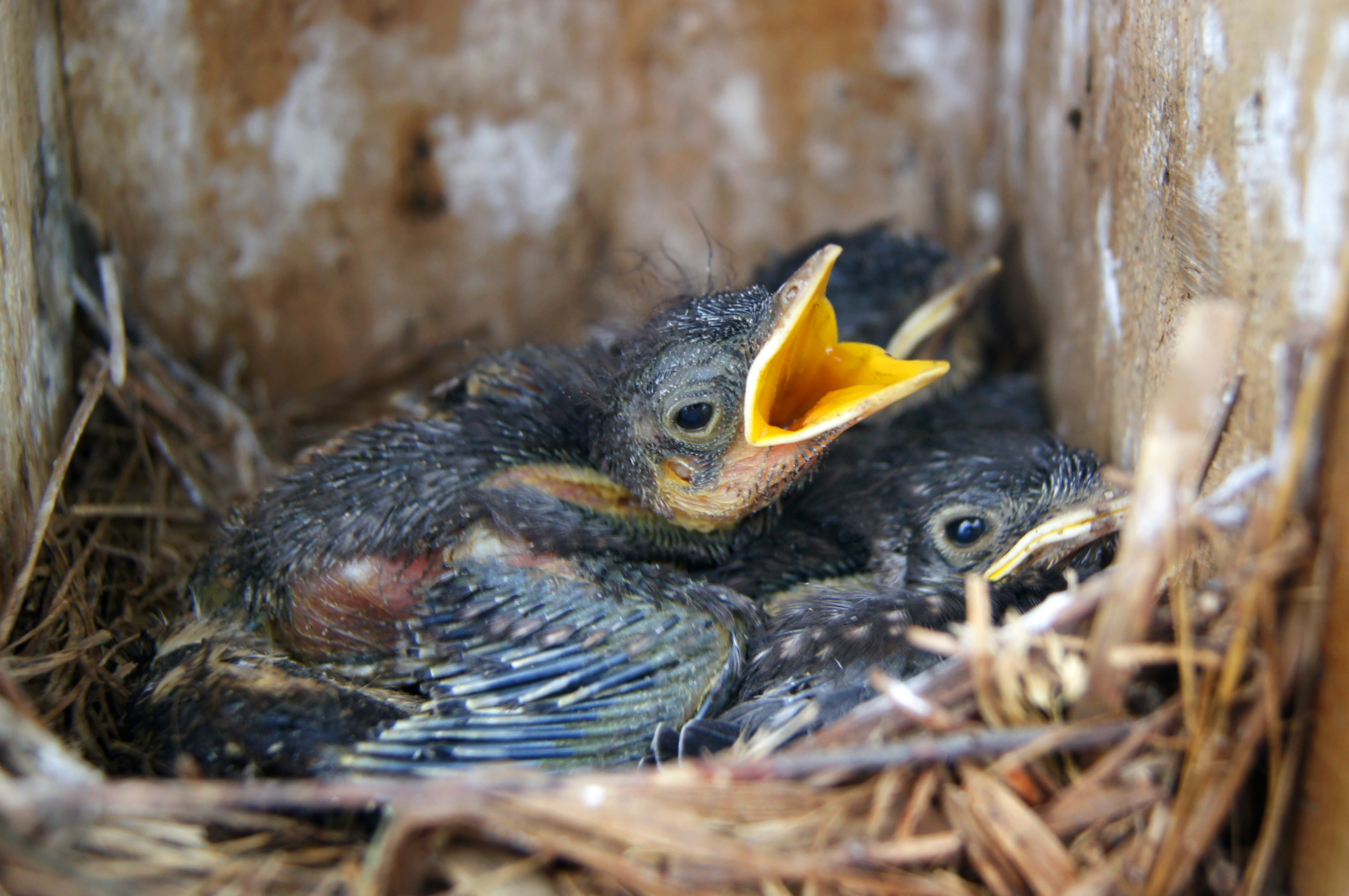 The smaller photo features the soloist of the family.
The smaller photo features the soloist of the family.
These blue birds are about a week old and progressing along nicely. However, not everyone in the brood has fared so well. Before the hatch I counted six eggs. It appears that four hatched and survived, but we found one of the four dead and removed it from the nest. (Surprised that the parents hadn’t removed it, since it had been dead for awhile and was smelling really bad.)
They have a couple of weeks to go before they are ready to take to the wing. It’s going to get very crowded in that little box by the time they fledge. There were five that survived to fledgling stage last year. That box was really crowded.
(Click on either image to see a larger version.)
Like a Dream
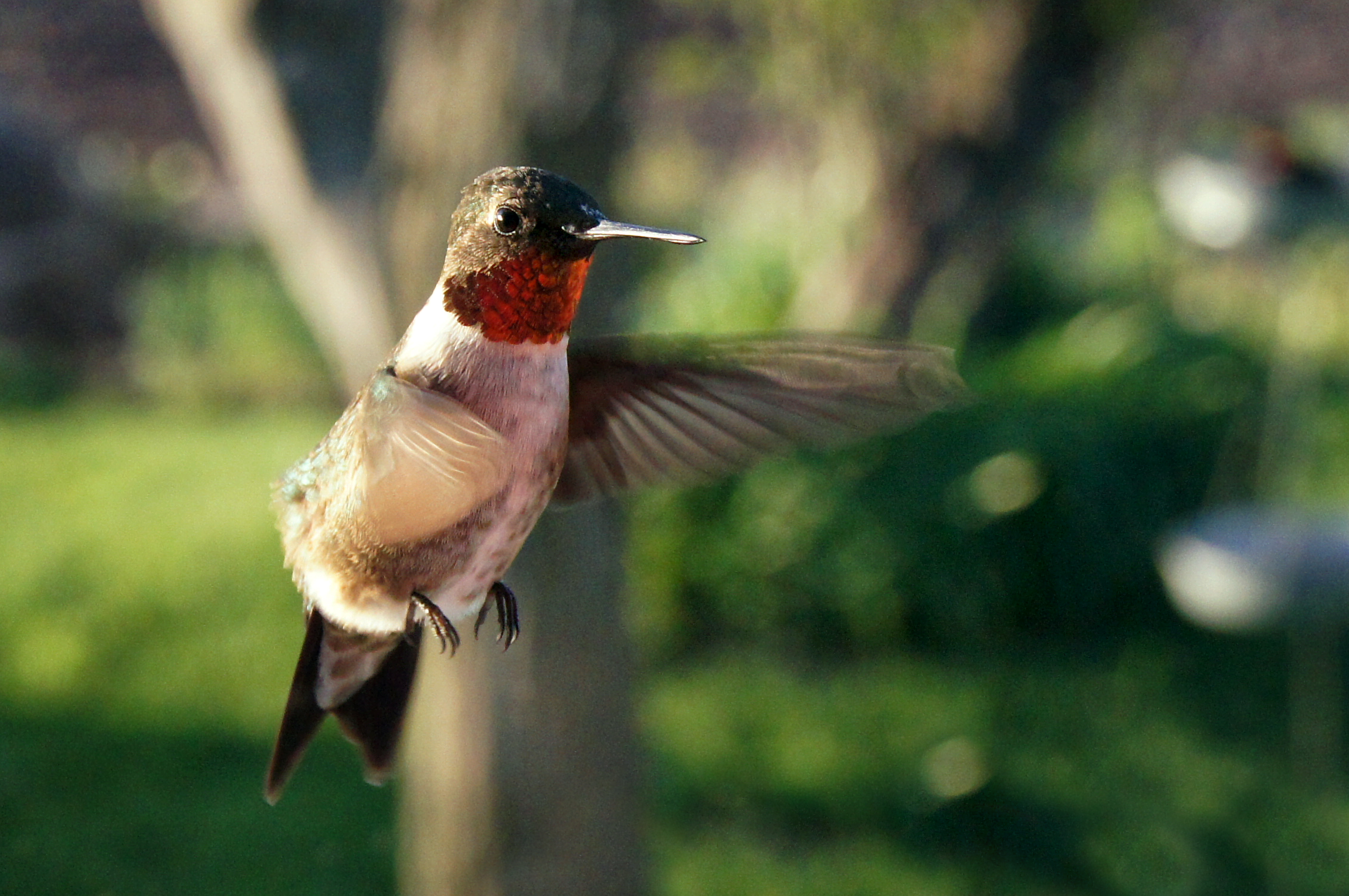
This is my favorite hummingbird photo of the year…so far. I’ve been trying to capture the hummingbirds that frequent the feeders at our house this spring. I’ve been able to grab a few images that I’ve liked. However, the best of them have been images of birds perched on a feeder. (See my earlier posts – Intense Eater and All Puffed Up)
My ultimate photographic goal is to capture them in flight. I want to freeze their little wings so that you can see the detail of every feather. (A nearly impossible task for an amateur like me.)
This photo doesn’t achieve my ultimate goal – to capture the detail of the hummingbird’s wings – but it captures my soul. I don’t want this to come across as bragging. I realize not everyone will find this image as compelling as I do. (Beauty is in the eye of the beholder, right?) But to this beholder, this image is like something from a dream.
I took this in the early morning light (around 5 am). The angle and quality of the sunrise lighting gives it depth. I think the colors are wonderful. The bird’s head being in focus while the rest of the body is slightly out of focus draws your attention to it’s stare; it’s character. (I also love its little feet.) Add the background blur and the whole image takes on an artistic quality. The overall effect reminds me of a watercolor painting.
Adding to the wonder of it all (at least for me) is the fact that I did very little to this image in post-processing. Aside from cropping and increasing the contrast a smidge, this is the image that came out of the camera. (My Sony SLT-A55 with the standard kit lens.)
This is one you’ll want to see closer. Just click on the photo to view a larger version.
All of the photos I post are available for purchase. If you’d like to buy one, click on the blue “Buy this Online” bar below for a variety of print and frame options or contact me for digital purchase and licensing options.
One Crazy, Swingin’ Red Head
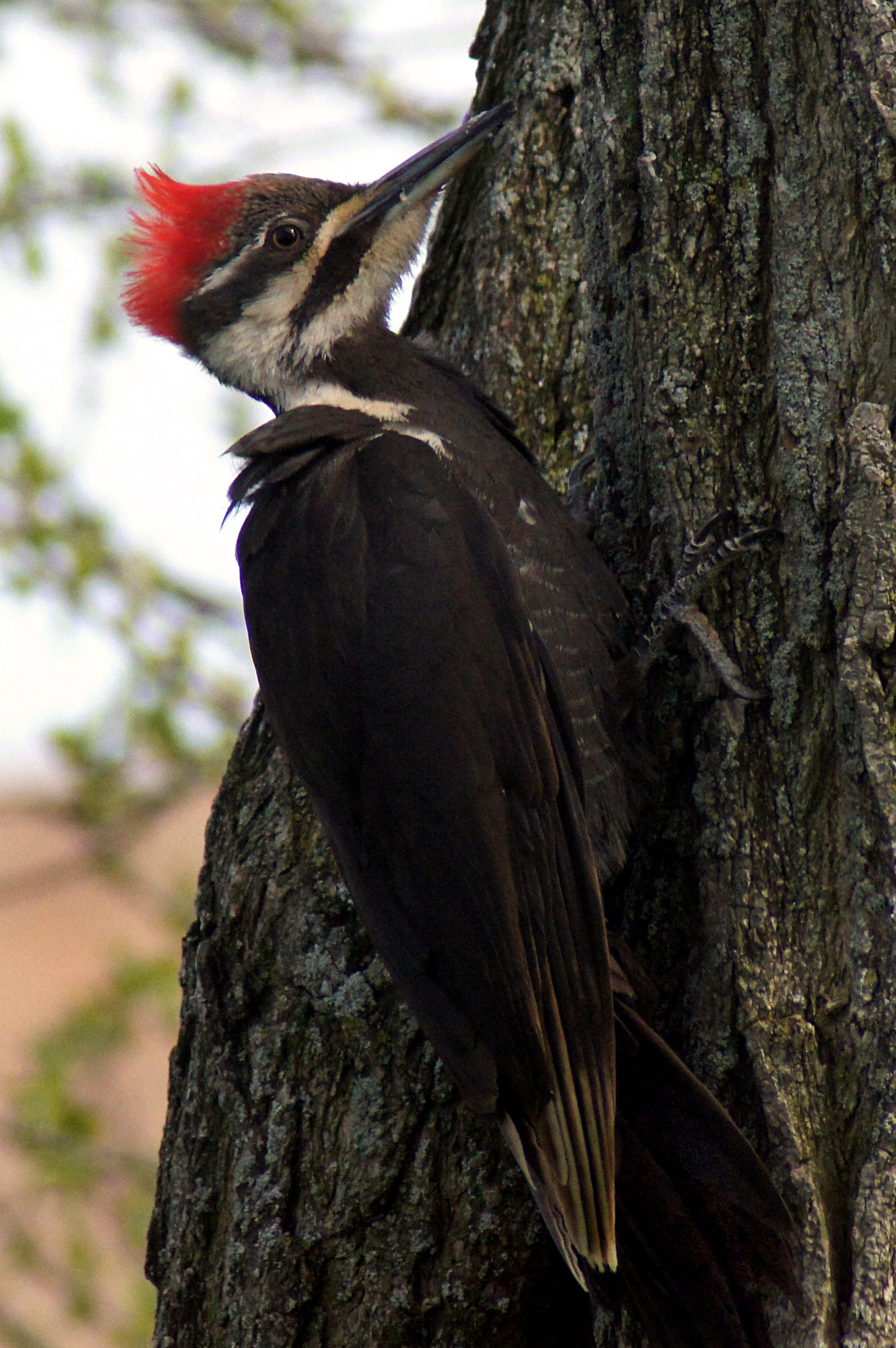 This is a Pileated Woodpecker. These birds are huge. It’s become a regular visitor to the jumbo suet feeder in our yard. The jumbo feeder is about 5 times the size of a normal suet feeder, and this bird makes it look small. The feeder hangs from a tree limb and acts like a swing when this big bruiser is hanging on.
This is a Pileated Woodpecker. These birds are huge. It’s become a regular visitor to the jumbo suet feeder in our yard. The jumbo feeder is about 5 times the size of a normal suet feeder, and this bird makes it look small. The feeder hangs from a tree limb and acts like a swing when this big bruiser is hanging on.
These are strange looking birds. It’s believed a Pileated’s red crest and sound was inspiration for the cartoon character Woody Woodpecker.
According to Wikipedia.org – – The Pileated Woodpecker (Dryocopus pileatus) is a very large North American woodpecker, almost crow sized, inhabiting deciduous forests in eastern North America, the Great Lakes, the boreal forests of Canada, and parts of the Pacific coast. It is also the largest woodpecker in America.
The call is a wild laugh, similar to the Northern Flicker. Its drumming can be very loud, often sounding like someone striking a tree with a hammer. This bird favors mature forests, but has adapted to use second-growth stands and heavily wooded parks as well.
(Click on an image to view a larger version.)
Oriole

“I just flew in from Baltimore…and boy are my wings tired!”
We have a few orioles that show up this time of year. They like the oranges we put out. This guy still has a little orange stuck to his beak.
According to Wikipedia.org – – The Baltimore Oriole (Icterus galbula) is a small icterid blackbird that averages 18 cm long and weighs 34 g. This bird received its name from the fact that the male’s colors resemble those on the coat-of-arms of Lord Baltimore.
Adults have a pointed bill and white bars on the wings. The adult male is orange on the underparts, shoulder patch and rump. All of the rest of the male is black. The adult female is yellow-brown on the upper parts with darker wings, and dull orange on the breast and belly.
The Baltimore Oriole’s nest is a tightly woven pouch located on the end of a branch, hanging down on the underside.
Baltimore Orioles forage in trees and shrubs, also making short flights to catch insects. They mainly eat insects, berries and nectar, and are often seen sipping at hummingbird feeders. Oriole feeders contain essentially the same food as hummingbird feeders, but are designed for orioles, and are orange instead of red and have larger perches. Baltimore Orioles are also fond of halved oranges and grape jelly.
(Click the photo to see a larger version.)
Bottom View
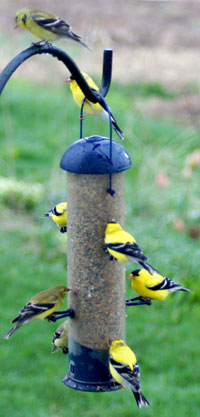 This American Goldfinch (male) was hanging on the top of the finch feeder, waiting for an opening on one of the perches below. As you can see, it’s a popular neighborhood dining spot.
This American Goldfinch (male) was hanging on the top of the finch feeder, waiting for an opening on one of the perches below. As you can see, it’s a popular neighborhood dining spot.
This image was taken on a drab and drizzly day, so you’ll notice his feathers appear a bit damp.
There is no shortage of Goldfinches at our house – year round. (Might have something to do with the food we put out.) It’s nice to see them back in their bright yellow and black plumage for the spring and summer.
(Click on the main image for a larger view.)
Bluebird Hatch
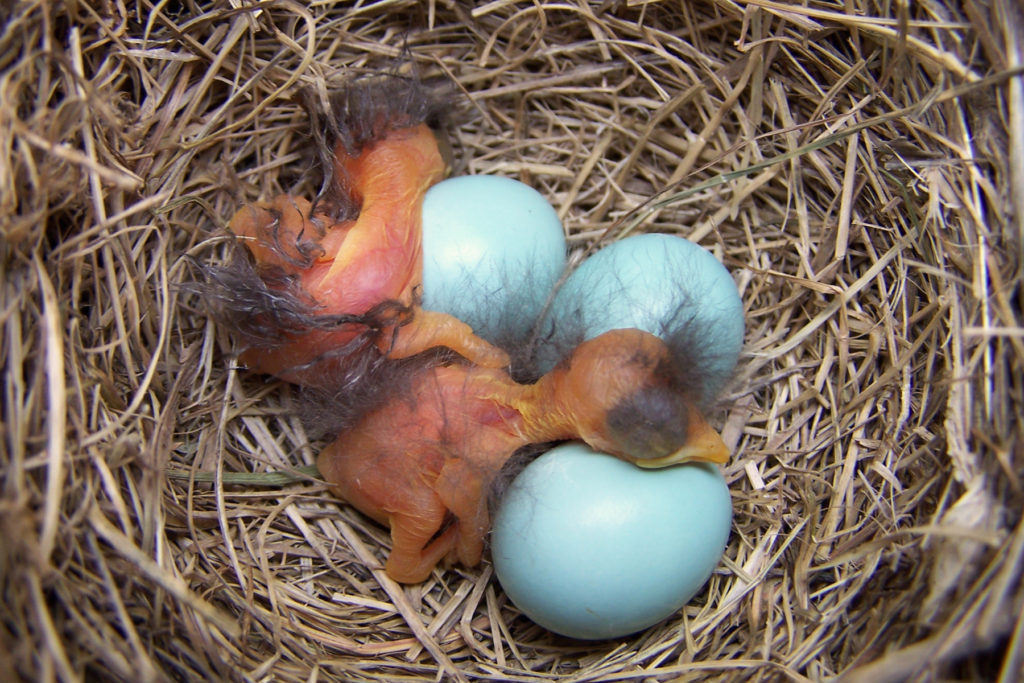
Just hours old, these bluebirds are waiting for their siblings to hatch. All of them successfully hatched and fledged.
I shot this by lifting the top off the bluebird house and shooting straight down with my Kodak Easyshare DX7590. This photo was taken in early June of 2010.
(Click the image to see a larger version.)
All of the photos I post are available for purchase. If you’d like to buy one, click on the blue “Buy this Online” bar below for a variety of print and frame options or contact me for digital purchase and licensing options.
Classic Portrait Pose
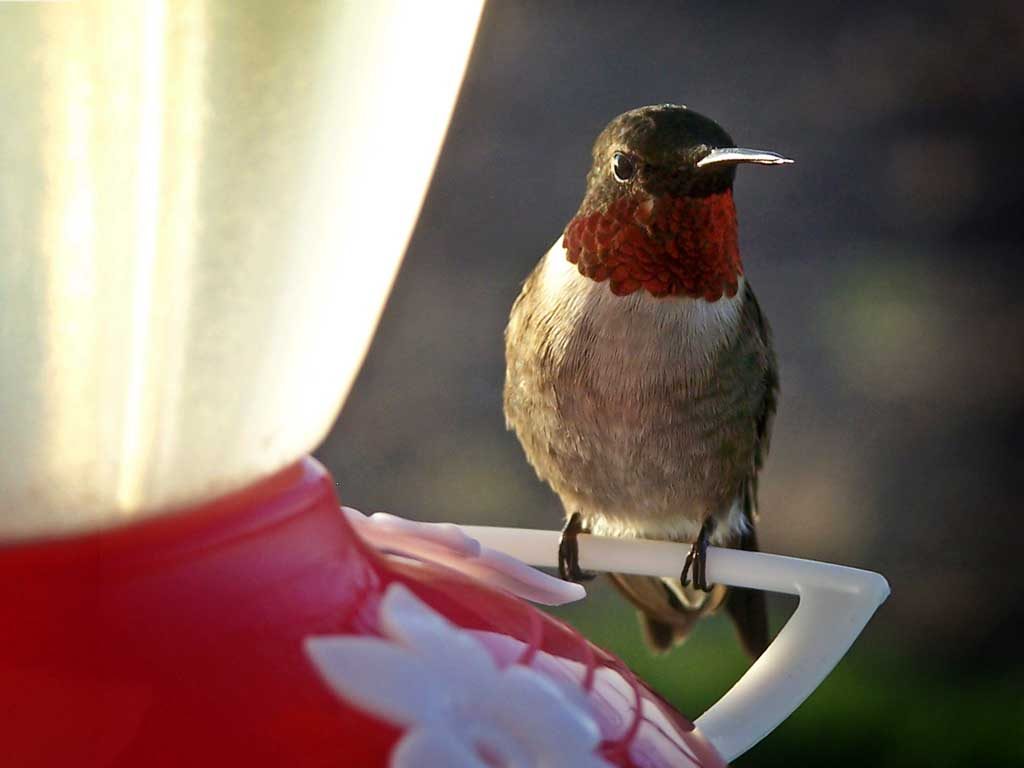
This is one of my favorite photos. I snapped this on a Sunday morning before heading off to church in May of ’09. The early morning light (6 am) muted the colors of this Ruby-throated Hummingbird. The more I looked at it, the more I liked the effect. (Click the photo to view a larger size.)
All of the photos I post are available for purchase. If you’d like to buy one, click on the blue “Buy this Online” bar below for a variety of print and frame options or contact me for digital purchase and licensing options.






